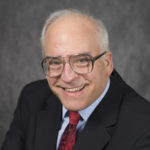September 19, 2018

Looking for a STEM lesson? With all the free lessons available online, it’s not easy to determine which ones are worth your time. Unless you spend hours in front of your computer, how can you tell if the lesson is designed by a credible, experienced educator? Never fear! We’ve found some of the best free STEM lesson sources.
Please let us know in the comments section below if you find other worthwhile STEM lessons online. Enjoy!
Read the rest of this entry »
 Leave a Comment » |
Leave a Comment » |  College level, Elementary level, High School level, Middle School level, STEM | Tagged: awesome science experiment, DIY, Educational Innovations, friction, fun experiments, homeschool, kinetic energy, parent friendly, phenomenon based learning, potential energy, science, STEM |
College level, Elementary level, High School level, Middle School level, STEM | Tagged: awesome science experiment, DIY, Educational Innovations, friction, fun experiments, homeschool, kinetic energy, parent friendly, phenomenon based learning, potential energy, science, STEM |  Permalink
Permalink
 Posted by Donna Giachetti
Posted by Donna Giachetti
June 11, 2018
 By Tina Brown
By Tina Brown
We first heard the term “STEM” several years ago. In May of 2013, the National Science and Technology Council introduced their five-year strategic plan. It was a 127-page report on how to strengthen American schools’ science, technology, engineering, and math education programs.
Essentially, the goal of this plan was to produce children who would eventually be competitive in an international job market. However, within a few years of the STEM hype, educators realized there was something missing.
The Missing Element in STEM
Read the rest of this entry »
 Leave a Comment » |
Leave a Comment » |  Elementary level, Middle School level, STEM | Tagged: Educational Innovations, fun experiments, hands-on activity, hands-on science, homeschool, parent friendly, PBL, PhenoBL, phenomenon based learning, phenomenon-based science, STEM, variables |
Elementary level, Middle School level, STEM | Tagged: Educational Innovations, fun experiments, hands-on activity, hands-on science, homeschool, parent friendly, PBL, PhenoBL, phenomenon based learning, phenomenon-based science, STEM, variables |  Permalink
Permalink
 Posted by Donna Giachetti
Posted by Donna Giachetti
April 13, 2018
 By Cathy Byrne
By Cathy Byrne
Virtually all fourth grade students explore electricity and magnetism. As part of this unit, students are asked to do two things:
1 – Make observations to provide evidence that energy can be transferred from place to place by sound, light, heat, and electric currents (4-PS3-2)
2 – Apply scientific ideas to design, test, and refine a device that converts energy from one form to another (4-PS3-4).
This year, the teachers at my school put a new twist on our electricity and magnetism unit… and the results were amazing!
 Leave a Comment » |
Leave a Comment » |  electricity, Elementary level, experiments, magnetism, Middle School level, STEM | Tagged: DIY, Educational Innovations, electrical circuits, electricity, energy, experiments, fun experiments, hands-on activity, homeschool, light, magnetism, parent friendly, PBL, PhBL, PhenoBL, phenomenon based learning, science, science fair project, STEM, variables |
electricity, Elementary level, experiments, magnetism, Middle School level, STEM | Tagged: DIY, Educational Innovations, electrical circuits, electricity, energy, experiments, fun experiments, hands-on activity, homeschool, light, magnetism, parent friendly, PBL, PhBL, PhenoBL, phenomenon based learning, science, science fair project, STEM, variables |  Permalink
Permalink
 Posted by Donna Giachetti
Posted by Donna Giachetti
March 23, 2018
 by Priscilla Robinson
by Priscilla Robinson
If you teach STEM, you’ll want to learn about the OneCar system.
The performance components in the Next Generation Science Standards (NGSS) have spawned many wonderful chances to explore STEM in the classroom. The STEM curriculum is based on the idea that an interdisciplinary, applied approach is the best way to teach students these four specific disciplines. When your students are searching for solutions to real-world problems, they are more engaged, and their learning is more authentic.
Read the rest of this entry »
 2 Comments |
2 Comments |  College level, Elementary level, energy, experiments, High School level, Middle School level, Physics, science fair, STEM | Tagged: air pressure, awesome science experiment, Educational Innovations, energy, fun experiments, hands-on science, homeschool, Newton's First Law, Newton's Second Law, Newton's Third Law, parent friendly, PBL, phenomenon based learning, phenomenon-based science, Physics, rockets, science, science fair project, STEM, variables |
College level, Elementary level, energy, experiments, High School level, Middle School level, Physics, science fair, STEM | Tagged: air pressure, awesome science experiment, Educational Innovations, energy, fun experiments, hands-on science, homeschool, Newton's First Law, Newton's Second Law, Newton's Third Law, parent friendly, PBL, phenomenon based learning, phenomenon-based science, Physics, rockets, science, science fair project, STEM, variables |  Permalink
Permalink
 Posted by Donna Giachetti
Posted by Donna Giachetti
March 2, 2018
 by Alex Scheeline
by Alex Scheeline
The Smithsonian Institution’s National Museum of American History, on the national mall in Washington, D.C., has an especially fascinating exhibit on Thomas Edison. The exhibit highlights the development of electricity and lighting, and, more generally, invention. In late 2017, I visited an area that featured a set of lamps—including a low-pressure sodium vapor lamp, a mercury lamp, an incandescent lamp, and a compact fluorescent lamp.
Read the rest of this entry »
 1 Comment |
1 Comment |  College level, experiments, High School level, Middle School level, Physics, science fair, STEM | Tagged: color, diffraction, DIY, experiments, hands-on science, light, phenomenon based learning, phenomenon-based science, physics demonstration apparatus, science, science fair project, spectra, spectrascope, STEM, ultraviolet |
College level, experiments, High School level, Middle School level, Physics, science fair, STEM | Tagged: color, diffraction, DIY, experiments, hands-on science, light, phenomenon based learning, phenomenon-based science, physics demonstration apparatus, science, science fair project, spectra, spectrascope, STEM, ultraviolet |  Permalink
Permalink
 Posted by Donna Giachetti
Posted by Donna Giachetti




 Posted by Donna Giachetti
Posted by Donna Giachetti  By Tina Brown
By Tina Brown By Cathy Byrne
By Cathy Byrne by Priscilla Robinson
by Priscilla Robinson by Alex Scheeline
by Alex Scheeline